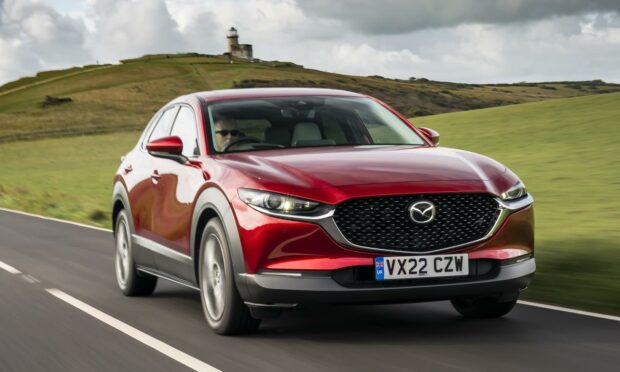The CX-30 sits in the middle of Mazda’s SUV line up, below the larger CX-5 and above the CX-3.
Based on the same platform as the excellent Mazda 3, the CX-30 shares similar styling cues with its hatchback sister car.
Sharp headlights, an aggressive nose and a distinctive teardrop shape all help it stand out from the crowd.
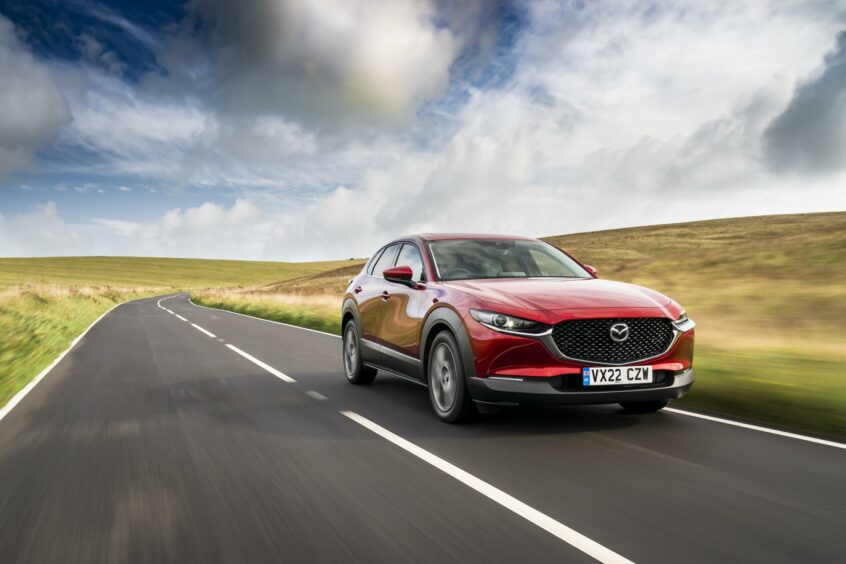
Mazda’s nice delivery gentlemen dropped a CX-30 off at my house all buffed and polished. My model came in Soul Crystal Red – a fabulous, rich hue that is by far the best colour Mazda offers.
Prices start at a little over £22,000, which pitches the CX-30 against mainstream SUVs such as the Seat Ateca and Skoda Karoq, as well as more upmarket rivals like the Volvo XC40 and BMW X2.
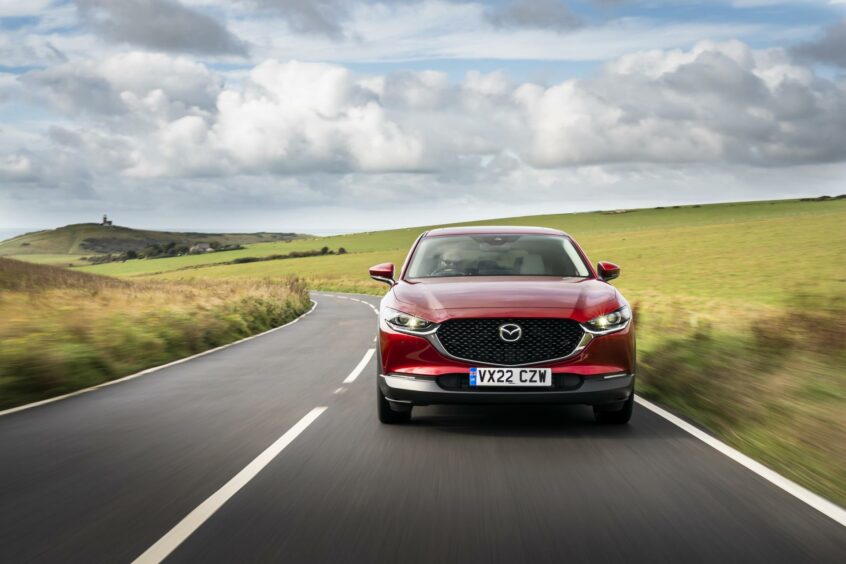
As is the case with an increasing number of car makers, Mazda has dropped the diesel offering from its CX-30 range. Instead buyers have the choice of two 2.0 litre petrol engines.
Both have mild hybrid systems that pair a small electric motor and battery. It won’t drive on electric power alone like some hybrids but the system boosts low speed responses and improves fuel economy.
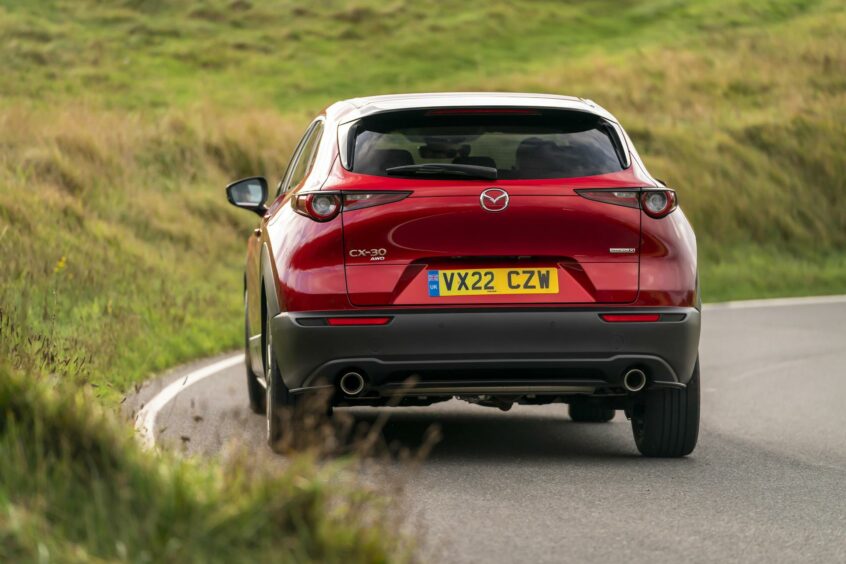
The entry level engine produces 120bhp, while the more powerful of the two belts out a healthier 184bhp. The former completes the 0-62mph sprint in 10.6 seconds with the latter improving that time to 8.3 seconds.
Top spec models are available with four-wheel drive but the CX-30 isn’t intended for off road driving and the majority of sales will be front-wheel drive models.
Buyers can choose from six-speed manual or six-speed automatic transmission. Mazda claims the CX-30 will do just under 50mpg and I got around 47mpg from my week of driving, which is pretty close to the official figure.
All the toys you could want
I drove the 186bhp model with manual transmission in high spec GT Sport trim.
For a price tag of just over £30,000 it came with all the toys you could want including heated seats and heated steering wheel, leather seats, electric driver’s seat with memory function, dual zone climate control, a power operated boot and keyless entry.
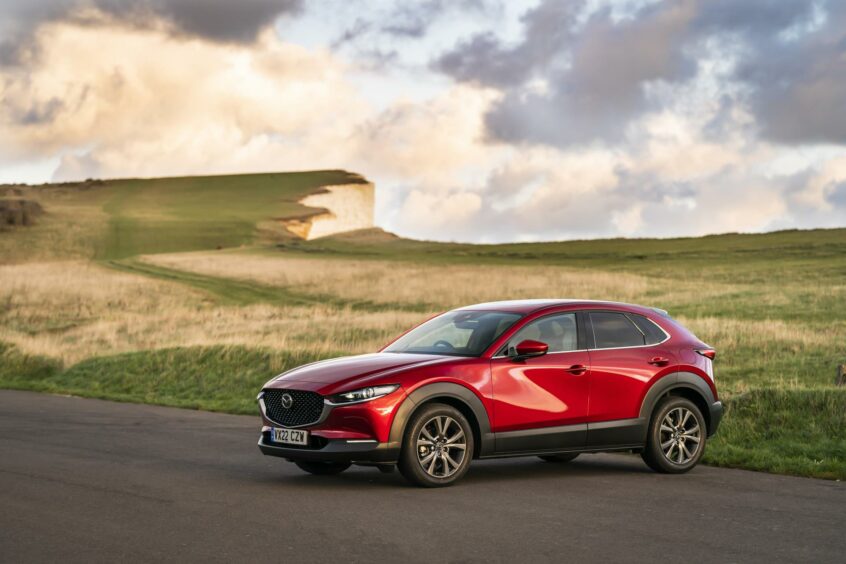
The Mazda CX-30 is a cut above similar cars from Ford, Kia, Skoda and Hyundai when it comes to interior quality.
The cabin is beautifully put together, with crisp lines, clean stitching on the leather seats, buttons that feel built to last and premium finish all round.
Unlike most car makers Mazda has resisted the trend to have a touchscreen control everything. This is undoubtedly a good thing.
Touchscreens are fine when you’re stationary but a nightmare to use while driving.
Handling is good for an SUV but it is the refinement that really impresses
Instead there’s old fashioned buttons and an excellent rotary controller that’s easy to operate without taking your eyes off the road.
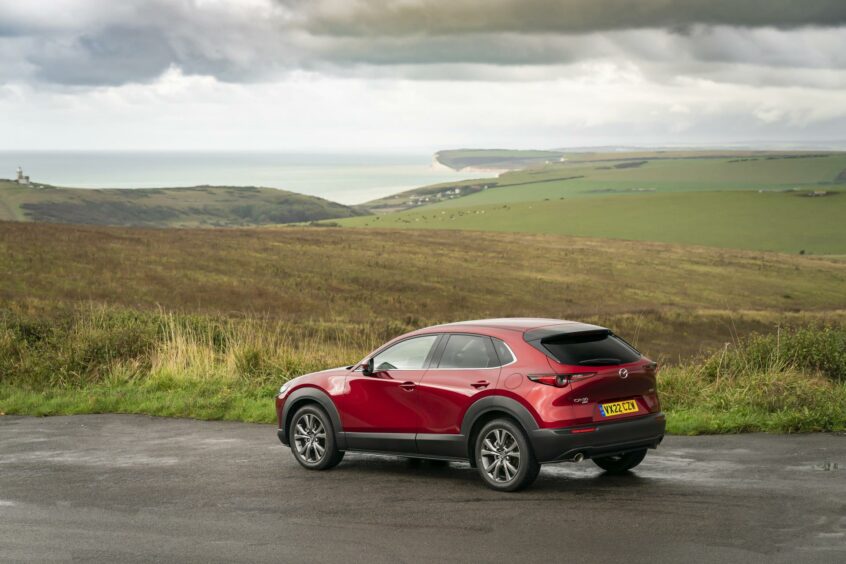
Speaking of the road, the Mazda CX-30 is an excellent drive. Handling is good for an SUV but it is the refinement that really impresses. I had it up around the north-east and down to the central belt during my week with the car.
The suspension is smooth and even at 70mph the cabin is amazingly quiet. Wind, tyre and engine noise are all incredibly faint. In this regard it’s better than anything else in its class.
It even outdoes premium rivals like the Audi Q2 and Q3 and BMW X1 and X2.
It looks great, drives nicely and has exceptional road manners
Where the CX-30 does not score full marks is interior space. There’s enough room in the back for average adults and at 430 litres the boot is a decent size.
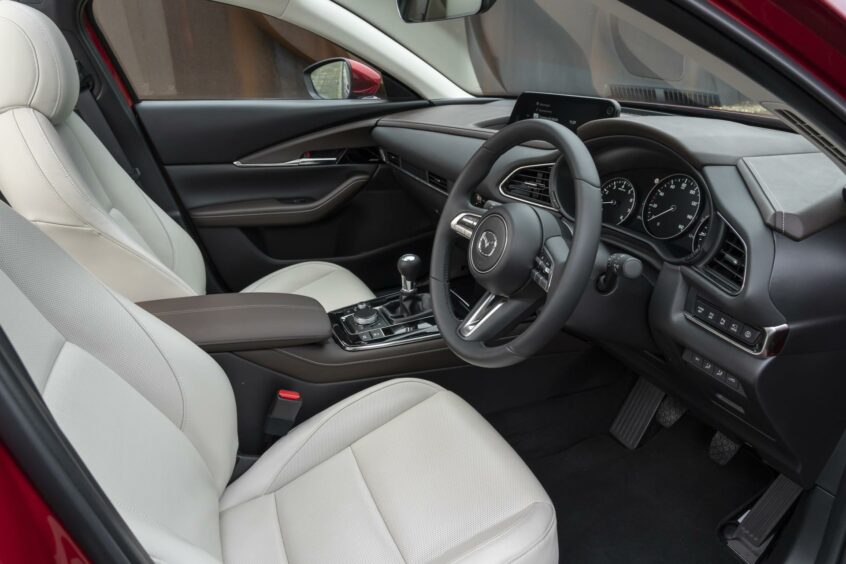
However, rivals such as the Skoda Karoq, Seat Ateca and Hyundai Tucson all offer more room and are a better bet if practicality is your priority. Mazda itself offers the excellent and tremendously roomy CX-5 for those who need more room and want to stay with Mazda’s stable of SUVs.
I was thoroughly impressed with the Mazda CX-30. 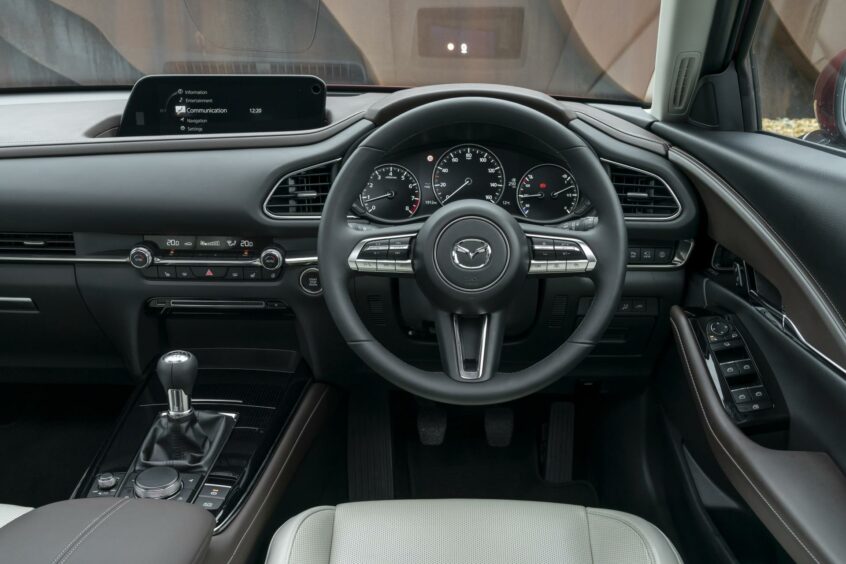
The Facts
Model: Mazda CX-30
Price: 30,415
0-62mph: 8.3 seconds
Top speed: 127mph
Economy: 49.6mpg
CO2 emissions: 128g/km
More like this:
- The Mazda MX-5 RF: Fast, furious and fun to drive
- Space age Mazda CX-5 goes the distance
- Mazda 3 hatchback a cut above its rivals
